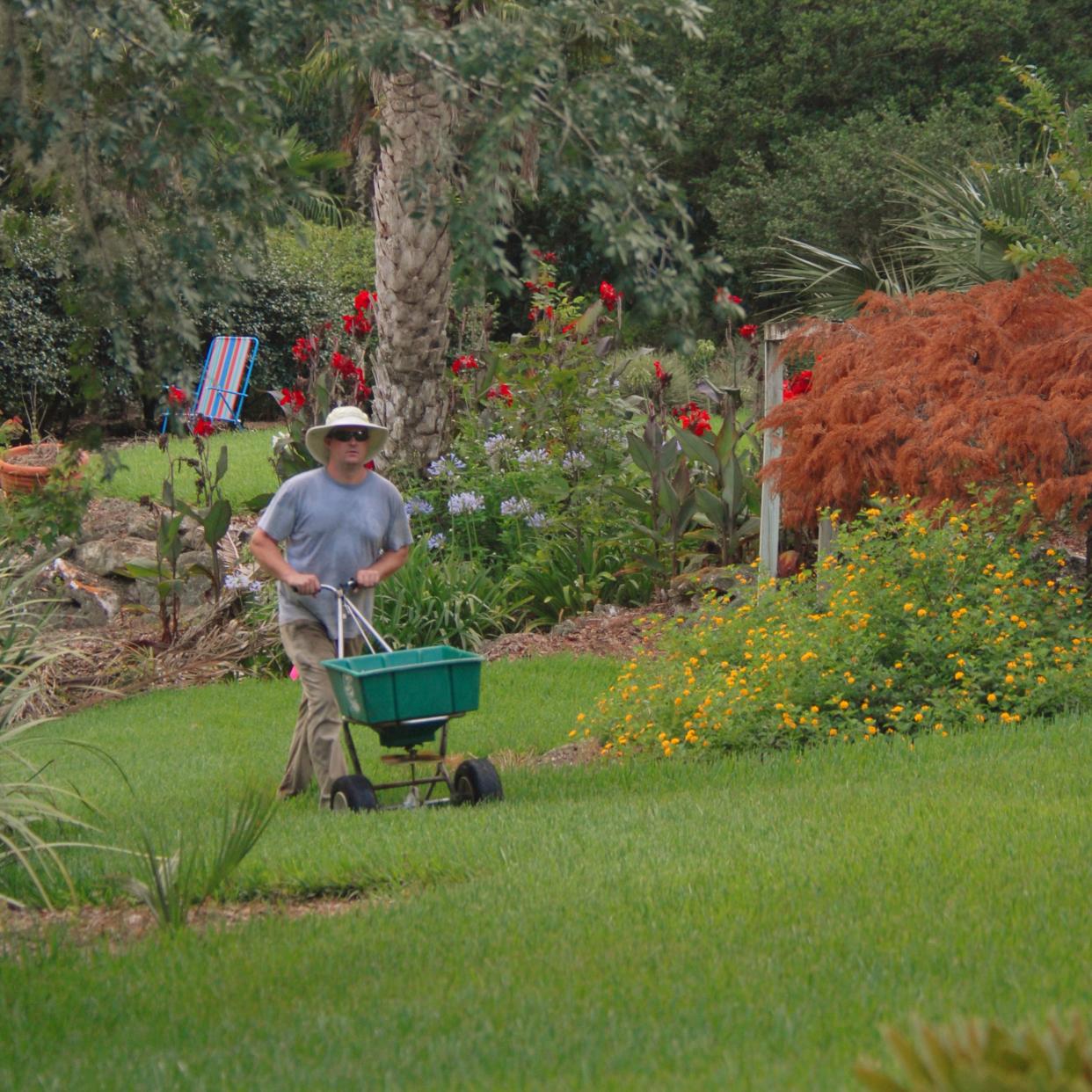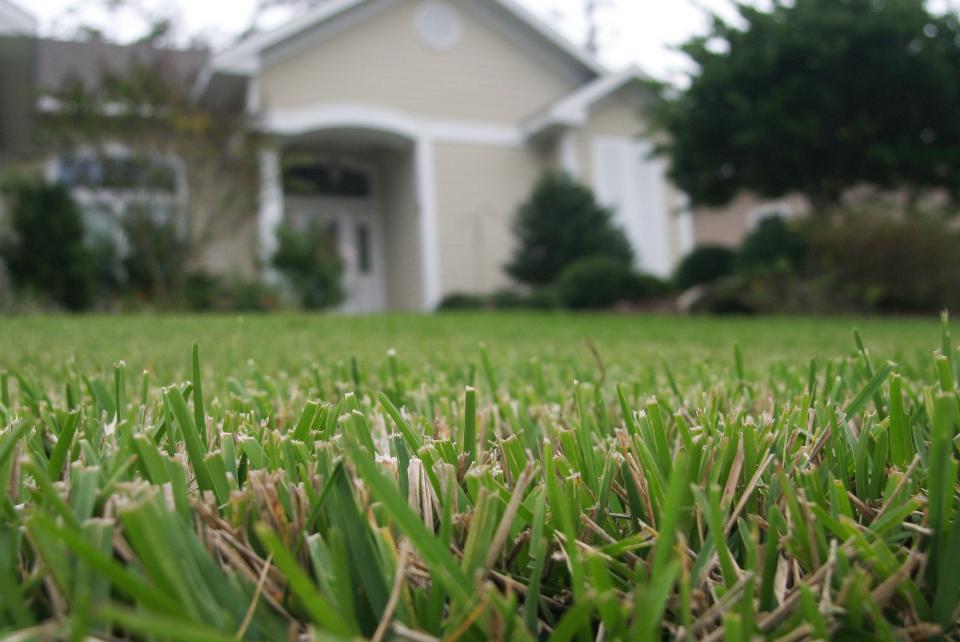Ready to fertilize your lawn? Here's what you should know before you begin

Have you been struggling to get a nice, lush lawn your neighbors will notice? Never applied fertilizer to your lawn before? It isn’t as hard as you think, and April is the right time to make your first application of the year. You can do it yourself while being gentle to the environment.
Most people will simply get a bag of fertilizer, dump it in a spreader and start walking. This is not a good idea. If you apply too much, your excess nitrogen can run off in the next rain or irrigation event into nearby surface waters. Excess nitrogen in our creeks, ponds, and rivers causes all sorts of problems and leads to algal blooms and fish kills. What your yard contributes might not be much, but multiplied by all the yards in your watershed, it adds up. Also, Duval County has a fertilizer ordinance and if you apply too much, you will be in violation. Doing a little bit of math before putting the granules into the spreader will keep this from happening.
The first thing to determine is the square footage of your lawn. If you know how large your property is, you can go from there. For example, a quarter of an acre is 10,890 square feet. Now, let’s say your house is 2,500 square feet. Subtract that from the total square footage. Next, get a tape measure and figure out the square footage of your driveway, patio, landscape beds, or whatever else you have that’s not grass. Subtract all of that too. That gives you the square footage of turf to be fertilized.
The ordinance says to apply no more than one pound of nitrogen per 1,000 square feet of turfgrass if you are using a fertilizer that is at least 30% slow-release. Now you need to calculate how many pounds of fertilizer to apply. The first of the three big numbers on the bag of fertilizer is the percentage of nitrogen in the bag. Let’s say, for example, your first number is 22, which means your fertilizer is 22 percent nitrogen. To find out how many pounds of that product to use on 1,000 square feet, divide 1 pound of nitrogen by the percentage of nitrogen in the bag. One divided by .22 gives you 4.5 lbs of fertilizer needed for 1,000 square feet (1/.22=4.5). Maybe your lawn area is bigger than 1,000 square feet. Just multiply one more time. So, if your lawn was 2,500 square feet, you would multiply 4.5 lbs. by 2.5 to get a total of 11.35 pounds of fertilizer. To skip this calculation, you can go to fillcalculator.com/fertilizer and plug in your numbers to get the number of pounds of product needed.

What about the part of the ordinance that talks about 30% slow-release nitrogen? There will be a section on the fertilizer label that says guaranteed analysis. Look there to see if any of the nitrogen in the bag is from water insoluble nitrogen. For our example using 22% nitrogen in the bag, we would need at least 6.6% water-insoluble nitrogen in the bag to get to our 30% slow-release number. How did I get there? Thirty percent of twenty-two percent is .066, or 6.6% (.3x.22=.066). If you cannot find a fertilizer that has at least 30% slow-release nitrogen, you need to apply less product to make up for it. To determine how many pounds to use, multiply the pounds you came up with for your yard by .7. This makes up for not having 30% slow-release nitrogen in your bag.
If this is more math than you want to do, there is a fool-proof way around it. The Extension office has a soil test available called SoilKit. To use SoilKit, you go to their website and register your kit. At registration, there is a tool you can use that calculates the square footage of your yard from the address you enter using aerial photos of your property. You send in your soil sample and a few days later they email your results along with suggestions for fertilizer products to buy and exactly how much to use based on your yard. There is a cost of $32.95 for the kit, and more information can be found at soilkit.com. Make this the year you fertilize without guessing, whether you do the math yourself or have SoilKit do it for you.
Tonya Ashworth is an extension agent and environmental horticulture and Master Gardener coordinator with UF/IFAS in Duval County.
This article originally appeared on Florida Times-Union: How much fertilizer do you need for your lawn? How to do the math

